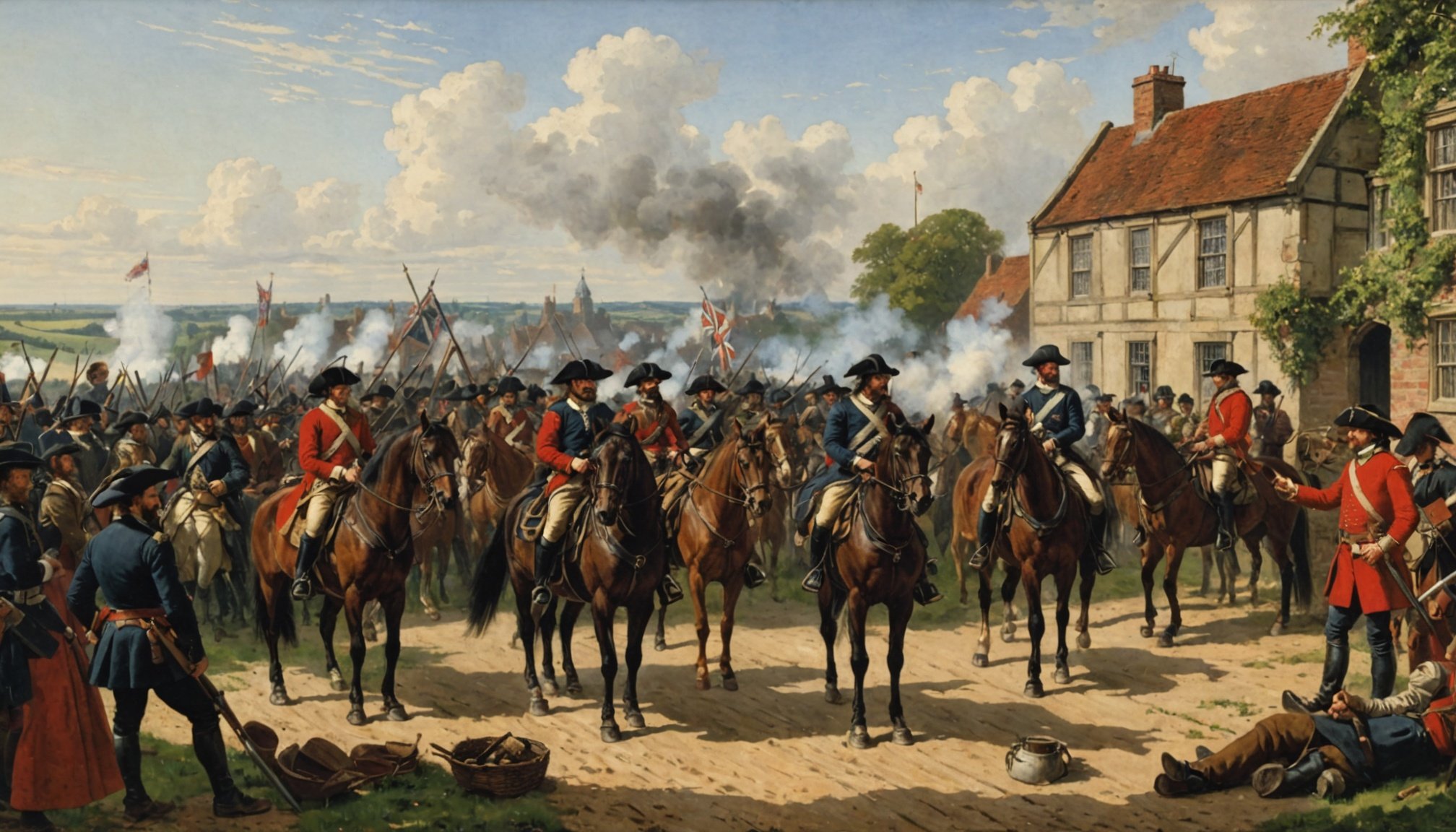Introduction to the British Civil War and Its Storytelling Importance
Understanding the British Civil War is crucial to comprehending the historical trajectory of England. This pivotal conflict, spanning from 1642 to 1651, saw power struggles between the monarchy, headed by King Charles I, and Parliament. Events such as the Battle of Naseby were critical turning points that shifted the balance of power. The ramifications of these skirmishes shaped the modern British political landscape.
Storytelling plays a vital role in grasping the historical significance of the British Civil War. Through narratives, we experience not only the factual events but also the human emotions and societal transformations of that turbulent time. Storytelling can transform mundane dates into engaging experiences, making history vibrant and relatable to today’s readers.
In the same genre : Discover the Top UK Destinations for Unforgettable Guided Tours of Medieval Castles
Engaging with historical sites offers a tangible connection to the past, breathing life into stories told across generations. Experiencing these locations first-hand enhances one’s appreciation of the era, fostering a deeper connection with the events that unfolded during the British Civil War. Walking through battlefields and examining artifacts enables individuals to immerse themselves in history, gaining insights into the era’s complexities and appreciating the rich tapestry of British heritage. Embracing these experiences makes history not just a subject but a living, dynamic narrative.
Essential UK Locations for Civil War Storytelling
Explore the rich history of the English Civil War through some of the most significant sites and landmarks across the United Kingdom. These locations not only offer a window into the past but provide immersive experiences that bring the stories of bravery, strategy, and conflict to life.
Have you seen this : Explore the Best UK Destinations for In-Depth Guided Tours on the History of British Glassmaking
The Battle of Naseby
The Battle of Naseby was a decisive confrontation in 1645. This battle marked a turning point in the English Civil War, with the Parliamentarian forces defeating King Charles I’s Royalists. At Naseby, visitors can explore interpretative trails that offer insights into military strategies and tactics employed during the battle. Guided tours, often led by knowledgeable volunteers, imbue the landscape with life, making it an ideal location for military historians and enthusiasts alike to engage with history.
The Siege of Gloucester
The Siege of Gloucester represented a pivotal moment of endurance in 1643. When visiting Gloucester, one can explore remnants of the city walls and historical landmarks that stood testament to the city’s resilience. Special exhibitions and museums offer in-depth looks at the citizenry’s struggle and inventive defense tactics, providing a comprehensive understanding of this significant event.
The Worthy Deeds of Worcester
Worcester, the site of the final battle of the English Civil War, witnessed the dramatic culmination of conflict in 1651. Worcester offers a reflective visitor experience with its remnants of battlefields and museums capturing the war’s conclusion. With detailed displays, visitors can relive the triumphs and hardships faced by the opposing sides. Engaging in reenactments and interactive tours further enriches the understanding of this crucial historical venue.
Engaging Experiences at Civil War Sites
Discover the rich tapestry of American history at Civil War sites through immersive guided tours and dynamic reenactments. Many key historical locations offer guided tours that are meticulously curated to provide an insightful narrative of the events that took place. These tours are led by knowledgeable guides who often use a mix of storytelling and factual precision to engage visitors, ensuring you gain a deeper understanding of the past.
In addition to tours, living history events and reenactments offer more tactile experiences. Reenactments allow history enthusiasts to witness or even participate in dramatizations of pivotal battles or daily life during the Civil War. These events often feature authentic costumes, weapon demonstrations, and attention to historical detail, making history feel both tangible and immediate.
For those seeking educational opportunities, many Civil War sites provide tailored programs for schools and groups. These programs not only align with educational standards but also foster an appreciation for historical inquiry and critical thinking. Whether through interactive workshops or classroom sessions, students and history buffs alike can engage more deeply with the intricate narratives that shaped the nation.
Explore these enriching experiences to connect with the past in ways that are both informative and memorable.
Travel Tips for Exploring Civil War Hotspots
Planning to delve into the rich history of Civil War hotspots requires meticulous preparation. Here are some travel recommendations and planning tips to make your journey memorable.
Firstly, consider the best times of the year to visit. Autumn offers a perfect balance of weather and stunning foliage, creating a picturesque backdrop for exploration. Spring is equally pleasant, making it ideal for long walks through historic battlegrounds.
When it comes to accessibility, most sites provide comprehensive visitor information. Many offer free parking and are wheelchair accessible. Public transportation is available to larger battlefields like Gettysburg, though renting a car allows greater flexibility. Local buses or guided tours are excellent choices if you seek a more structured itinerary.
Exploring these historical sites can be overwhelming, so we’ve crafted some suggested itineraries. Start your adventure in the afternoon at Antietam, enjoy dinner at a local tavern, and finish the day recounting the battle history. Move onto Harpers Ferry in the morning, complemented by a packed lunch in one of the lush picnic areas. Each location offers unique tales from the past, catering to any history enthusiast’s desire.
Equipped with these travel tips, your Civil War exploration will undoubtedly be enriching and insightful.
Further Reading and Resources
Delving deeper into the rich tapestry of the British Civil War requires engaging with varied resources that offer insights on different aspects of the era. For comprehensive reading, consider seminal books such as “The World Turned Upside Down” by Christopher Hill, which explores the societal changes during the civil war. Additionally, “The Causes of the English Civil War” by Conrad Russell provides a nuanced analysis of the complex factors leading to the conflict.
For a visual perspective, documentaries are invaluable. The BBC’s “Civil War” series is particularly poignant, offering detailed reenactments and expert commentary. Another intriguing option is “The Stuart Dynasty,” which frames the war within the broader narrative of the Stuart reign.
Online, the British Library’s digital collections serve as an expansive repository of primary source materials, perfect for academic research or personal exploration. Meanwhile, the UK National Archives provide an array of historical documents that chart the war’s unfolding.
Beyond books and films, numerous scholarly articles and opinion pieces give further light on specific events and figures. Engaging with these resources allows for a holistic understanding of this transformative period in British history, catering to buffs and scholars alike.










